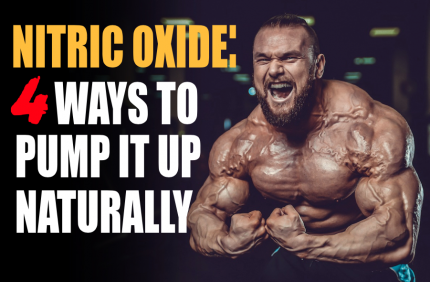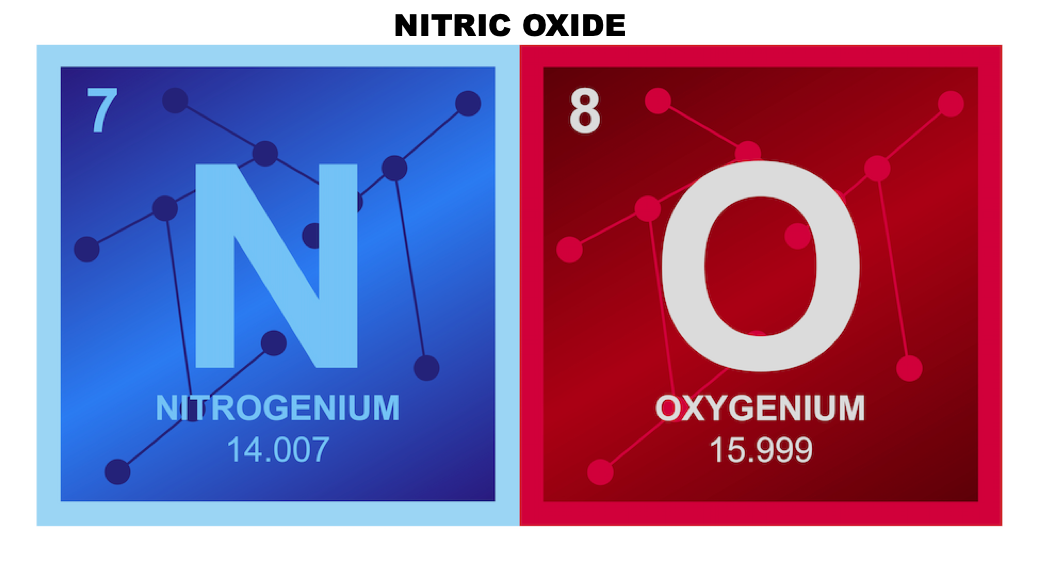Daniela DeFeo

Daniela is a nationally published author, health/fitness coach and wellness influencer. Her contributions have been featured in premiere publications and she works with leading brands to create content that promotes holistic health. She is the founder of DeeVita Wellness, where she provides personalized nutrition and fitness programs.

Nitric Oxide: 4 Ways To Pump It Up Naturally
By Daniela DeFeo
Increase your gains at the gym with an ample supply of nitric oxide pumping through your blood.
Nitric oxide is the body’s natural vasodilator—the secret weapon in optimizing performance and general health. When released, it signals the blood vessels to relax and expand, widening the arteries and increasing blood flow. With optimal levels circulating in the body, it efficiently delivers nutrients and oxygen to organs, tissues and working muscles.
How Is It Generated?
 The endothelium, which is considered to be your body’s medicinal pharmacy, is the innermost layer of the cells located in the lining of the blood vessels. These metabolically active cells release hormones and substances to maintain vascular health, and in particular, generate the prized molecule nitric oxide. When prompted, the endothelium opens its pharmacy, releasing just the right amount of nitric oxide to meet the needs of the body.
The endothelium, which is considered to be your body’s medicinal pharmacy, is the innermost layer of the cells located in the lining of the blood vessels. These metabolically active cells release hormones and substances to maintain vascular health, and in particular, generate the prized molecule nitric oxide. When prompted, the endothelium opens its pharmacy, releasing just the right amount of nitric oxide to meet the needs of the body.
Below are four central areas of focus to naturally boost nitric oxide for optimal health:
Exercise
Physical activity is the ultimate stimulus to activate the nitric oxide process. Elevating your heart rate and maxing out your bench press generates faster blood flow across the surface of endothelium, causing what is known as shear force. Upon detecting this, the endothelium squirts out more nitric oxide, which dilates the arteries, optimizes blood pressure and regulates blood flow to organs. Subsequently, regular exercisers reap further benefits of this phenomenon, as the endothelial cells generate additional nitric oxide, even when not exercising. In fact, physical activity is the only known process that causes consistent and continuous production of it by training your body to uphold optimal conditioning, reducing the risk of cardiovascular events.
Key Point: Incorporate regular aerobic and anaerobic training for its heart-healthy benefits and to enhance exercise performance.
"Anaerobic exercise is geared to the development of strength and muscular size by performing high intensity, short duration exercise. Aerobic exercise is geared exclusively to the development of endurance by low intensity, long duration activity." - John Cardillo, Canada's Premier Fitness Expert & Champion Bodybuilder
Nutrition
Eat your share of Mother Nature’s nitric oxide-boosting foods. Vegetables such as celery, beets, lettuce, spinach, and arugula are high in nitrates, which are converted to nitric oxide once consumed. Antioxidant-rich foods, on the other hand, sustain its longevity by helping to neutralize free radicals that degenerate it. As an unstable molecule, nitric oxide breaks down once in the bloodstream, so it constantly needs to be replenished. Include foods such as fruits, vegetables, nuts and seeds, as they will help to keep oxidation at bay and nitric oxide plentiful. Omega-3s have also been shown to restore the prized molecule; eat wild salmon or take a daily supplement to maintain ideal levels in the body.
Key Point: Feast on nitrate-, omega-3- and antioxidant-rich foods to increase production of nitric oxide, decrease its breakdown, and support higher levels overall.
Supplementation
Pump up your supply of nitric oxide with the amino acids L-arginine and L-citrulline. Considered to be efficient boosters, they work hand-in-hand to maintain and accelerate positive amounts in the body. Although both can be produced by a healthy body on its own, taking a daily supplement to increase its levels can have favorable results on health and exercise performance.
L-arginine is the body’s main building block, a precursor for nitric oxide production. L-citrulline is a by-product created when the body converts L-arginine to nitric oxide. Interestingly enough, L-citrulline can be recycled back to L-arginine, which in effect, produces a continual supply flowing through your blood.
Key Point: L-arginine and l-citrulline supplementation create a formidable nitric oxide-boosting cycle that is beneficial for vascular health and blood flow.
Breathing
Breathe in deeply to amplify nitric oxide production. Our sinuses create nitric oxide, so when we breathe through our nose, the enriched air is carried throughout body, dilating blood vessels in the lungs and increasing oxygen intake to tissues and organs. On the contrary, breathing heavily through the mouth causes a loss of carbon dioxide, the key to how oxygen gets released from red blood cells. Consequently, excessive mouth breathing can constrict blood vessels and hinder vascular circulation, ultimately impeding the oxygen-delivery process.
Key Point: Focus on nose breathing, not mouth breathing, to yield nitric oxide and oxygen for improved physical and mental functioning.
Bottom Line:
 Optimal health begins with a healthy cardiovascular system—more specifically, within your blood vessels. In order to maintain its formidable health, it needs to be in a perpetual state of nitric oxide production through aerobic and anaerobic exercise, a diet high in nitrate and antioxidant foods, L-arginine and L-citrulline supplementation, and nose breathing.
Optimal health begins with a healthy cardiovascular system—more specifically, within your blood vessels. In order to maintain its formidable health, it needs to be in a perpetual state of nitric oxide production through aerobic and anaerobic exercise, a diet high in nitrate and antioxidant foods, L-arginine and L-citrulline supplementation, and nose breathing.
Whether you’re looking to build power, strength, and endurance and/or maintain peak fitness, nitric oxide is what will safeguard your body and advance your physical gains.
References:- Higashi Y, Sasaki S, Kurisu S, et al. Regular aerobic exercise augments endothelium-dependent vascular relaxation in normotensive as well as hypertensive subjects: role of endothelium-derived nitric oxide. Circulation. 1999 Sep 14;100(11):1194-202.
- Hermann M, Flammer A, Lüscher TF. Nitric oxide in hypertension. J Clin Hypertens (Greenwich). 2006 Dec;8(12 Suppl 4):17-29.
- Lovegrove JA, Stainer A, Hobbs DA. Role of flavonoids and nitrates in cardiovascular health. Proc Nutr Soc. 2017 Jan 19:1-13.
- Bondonno CP, Croft KD, Ward N, Considine MJ, Hodgson JM. Dietary flavonoids and nitrate: effects on nitric oxide and vascular function. Nutr Rev. 2015 Apr;73(4):216-35.
- Khalaf D, Krüger M, Wehland M, Infanger M, Grimm D. The effects of oral l-arginine and l-citrulline supplementation on blood pressure. Nutrients. 2019 Jul 22;11(7).
- Should You Take Citrulline Supplements?. Healthline. https://www.healthline.com/nutrition/citrulline-supplements#section2. Published 2020. Accessed February 12, 2020.
- Lundberg JO, Settergren G, Gelinder, et al. Inhalation of nasally derived nitric oxide modulates pulmonary function in humans. Acta Physiol Scand. 1996 Dec;158(4):343-7.
- Morris SM Jr. Arginine: beyond protein. Am J Clin Nutr. 2006 Feb;83(2):508S-512S.
For more info on Daniela Defeo, check out her website at deevitawellness.com and follow Daniela on Instagram @deevitareflections or right here at Muscle Insider at Daniela Defeo.

